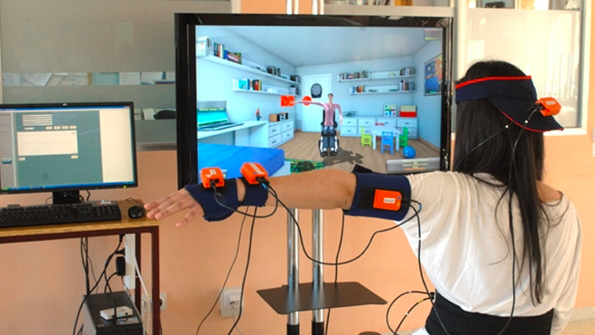Virtual Reality in Healthcare
Virtual reality is already improving the healthcare industry and is fast becoming the hottest industry, bringing together tech and the health sector and dramatically changing lives.
Here are just a few examples of how virtual reality is revolutionizing the healthcare industry:
Exposure Therapy
Survivors of hostilities who now live with post-traumatic stress syndrome may benefit from immersion therapy and virtual reality. The patient is immersed in simulation that allows them to work through their trauma by having them face it,
Also referred to as virtual reality immersion therapy (VRIT), it is the use of virtual reality technology for psychological or occupational therapy. Patients receiving VRIT navigate through digitally created environments and complete specially designed tasks tailored to treat their specific ailment.
Through the interaction with harmless virtual representations of traumatic stimuli, their fear responses are reduced. It has proven to be very effective in the treatment of PTSD and has also been applied to stroke patients regain muscle control and in the treatment of disorders such as body dysmorphia.
Phobia Treatment
Virtual reality exposure therapy places the patient in a computer-generated world where they experience stimuli linked to their phobia.
After skill building sessions to prepare the patient on how to manage automatic responses to anxiety-provoking situations, the therapist and patient work together to create a scale of anxiety-inducing situations. In controlled stages, the patient is exposed to these virtual experiences that evoke increasingly higher levels of anxiety.
Each stage will be repeated until the client is comfortable with the experience and satisfied with their response. At every level, the therapist will observe what the client is experiencing in the virtual world. If the degree of anxiety becomes overpowering, the patient can revert to the less stressful stage of treatment or immediately exit the virtual world.
Surgery Training and Robotic Surgery
Virtual reality technology allows trainee surgeons to obtain valuable experience but in a harmless environment. They learn skills and techniques without causing injury to patients and receive continuous feedback.
Robotic surgery is performed utilizing a robotic device such as a robotic arm which is controlled by a human surgeon. This results in faster procedures and fewer risks of complications during surgery. Because the robotic device is accurate, it means smaller incisions, less blood loss, and speedy recoveries.
The use of Virtual reality in healthcare allows the surgeon to control the movements of the robotic arm through delicate movements which would be challenging to perform by a human surgeon. Another use of virtual reality in surgery is by “remote telesurgery.” In this case, the patient is operated on by a surgeon who is in an entirely different location, completely separate from the patient. This would be a life-saving procedure particularly if the surgeon is too far to get to the patient in time due to a long travel.
If you are interested in digital health transformation, contact us!





